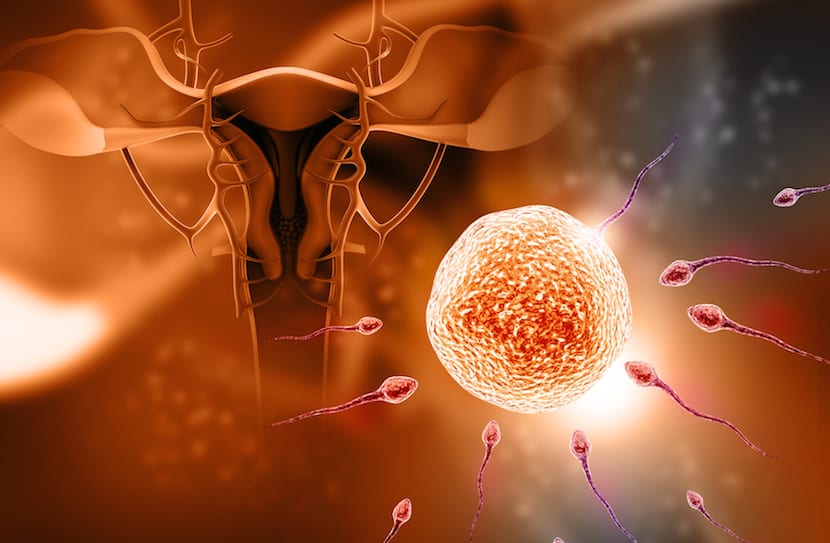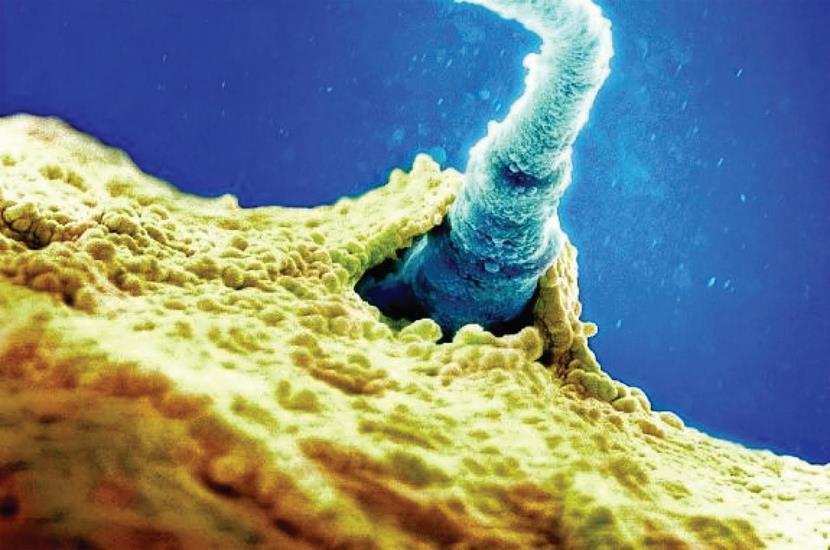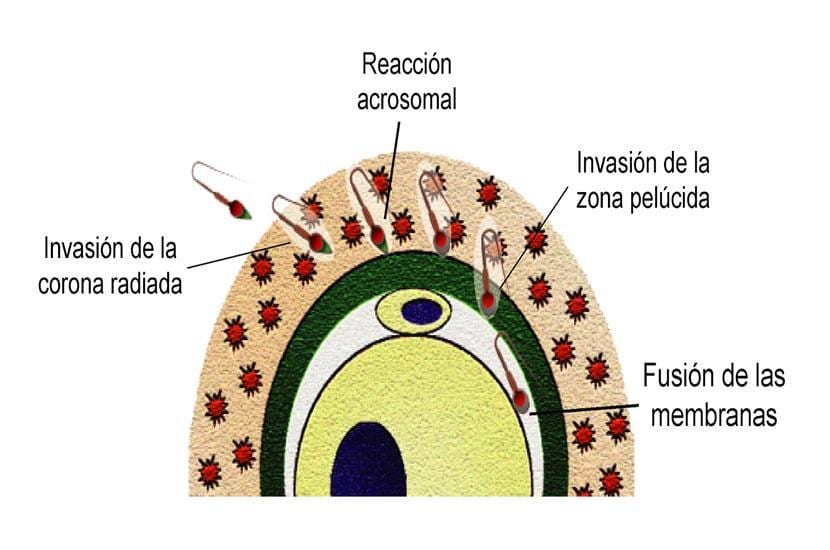
We continue with our special «Pregnancy Week by Week»: after week 1 y the 2, we come to fertilization. One of the most wonderful and fascinating processes in nature is undoubtedly fertilization. Beyond the classic image of the union between the egg and the sperm, you will like to know that this process involves a series of amazing steps that we had never been told about in class, and that in “Madres Hoy” we want to reveal to you.
We are in that perfect chemical dance where two sex cells or gametes are going to exchange their chromosomes, but not before making the best and most skillful race where a single sperm goes to reach that ovum. What happens next holds the greatest mystery and challenge for science, there where two tiny cells give way to a series of transformations to define little by little what we call "life". We explain it to you.
Fertilization step by step
Did you know that an egg is just over 0.135 ml in diameter? A sperm is even smaller, and in fact, there can be between 120 and 600 million sperm in each ejaculation. Now, but among all of them, only about 500 will reach that phase where fertilization will take place.
Let's see each of its phases.
A long journey begins.
This adventure begins when the semen is deposited in the vagina. This place is not a pleasant environment, it is too acidic and therefore the sperm are forced to look for a more alkaline place, thus passing from the uterus to fallopian tubes in a couple of hours.
Once in the fallopian tubes, sperm can survive for 48 to 72 hours. Thus, fertilization can occur between two or three days after having intercourse.
It is in this course where a large part of those millions of sperm are lost, reducing to a few lucky ones who will get through the membrane
of the ovum to give way to fertilization.
During this journey, the sperm experience the partial loss of the lining of their heads.. This is due to a very curious essential reason: so that a series of chemical reactions essential to break through the ovule can be initiated.
Penetration of the radiated crown
To better understand the stages of fertilization dWe must imagine the ovule as a capsule species protected in turn by various layers. One of them, the most external is precisely the radiated or radiated crown.
The radiated crown is made up of several layers whose function is to provide proteins to the ovum.
The sperm arrive here to then initiate a complex advance through all the follicular cells surrounding this structure. They do it thanks to a type of enzyme that allows them to open various tunnels. It's quite a struggle!
Arrival in the zona pellucida
The sperm have already passed through the corona radiata and are now in a second barrier they must cross. They will do so thanks to a type of enzyme that will generate changes in the sperm itself, causing what is known as an acrosome reaction.
At this stage, not all sperm will react in this way. The ultimate goal is for a very specific type of structure to appear: the acrosomic filament- Its purpose? Very simple, make contact with the cell membrane of the ovum. The final step ...

The fusion
Although only a few sperm have reached the zona pellucida, this battle of survival and enzymatic reactions will allow luck to be with only one, the one that can finally make contact with the plasma membrane of the oocyte thanks to the acrosomal filament. When this happens, a series of fascinating changes are initiated:
The membranes begin to fuse through various ionic changes where the adherence of more sperm to the oocyte is blocked.
The call appears fertilization cone, whose purpose is to allow the head, intermediate piece and tail of the sperm to enter the oocyte cytoplasm.
Fertilization occurs when nuclei fuseBoth the head of the sperm that has accessed the egg and the egg itself. It is then when a total of 46 chromosomes come together (each sex cell contributes 23), thus shaping the wonderful chromosome endowment of a new individual.
Although it is true that half of the genetic information corresponds to the father and mother, lThe union generates the creation of a unique and unrepeatable individual, which at this time is called a zygote and that after nine months of changes, growth and secret wonders that we will explain in future articles, will give way to a new being.
The following video it will help you to know a little more about the wonder of fertilization:
We invite you to be aware to discover the next phase of pregnancy step by step ...

Good afternoon
On February 21, I had a transfer of 1 embryo. We are on the 25th, if I go to the gynecologist and they do an echo, could they know if the embryo has implanted?
Thank you very much